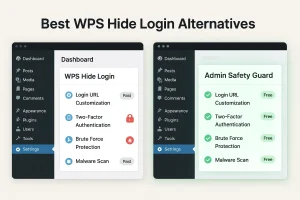Imagine you are driving from work to your home and craving a pizza. Well, you don’t need to take your hands away from the wheel or break concentration from driving. Simply say, “Hey Google, where can I get the best pizza around me?” You will get all the closest recommendations instantly.
This is how modern users are leveraging the power of Google Voice voice search. This search option is changing the way people are interacting on the web. The traditional search is not the only option since the voice search option offers quick answers, details, and recommendations.
Voice search is expected to surpass more than half of the online traditional search methods. Why? Because it requires using natural language rather than typing keywords. In this guide, we will show you how to optimize your site for better ranking through voice search options. So, let’s begin.
Table of Contents
The Evolution Of Google Voice Search and Ongoing Trends
Search engines have come a long way with vast algorithm changes and new methods. Google Voice Search is one of its most significant shifts, altering the traditional way of searching. It started with some basic voice command options.
However, it now features advanced AI-driven capabilities that recognize human natural speech patterns and provide relevant outputs. Let’s take a look at how Google Voice search evolved over time:
Early Days (2010–2015)
Google Voice Search started its initial journey in 2010 with basic speech-to-text recognition technology. It converted spoken words into text with basic voice recognition capabilities. However, it was facing troubles with accents, misinterpretations, and contextual understanding.
Example:
- Spoken Query: “Weather today.”
- Google’s Response: Displayed a list of weather-related search results instead of giving a direct spoken answer.
RankBrain Era (2015–2018)
The RankBrain technology improved Google voice search with machine learning and intent recognition. This algorithm allowed Google to better understand the search intent of human input. As a result, Google can process conversational voice queries, rather than focusing solely on keywords.
Example:
- Spoken Query: “What’s the best place to eat nearby?”
- Google’s Response: Showed a list of local restaurants based on user location, rather than just generic search results.
BERT Update (2019)
The Bidirectional Encoder Representations from Transformers (BERT) improved Google’s understanding of complex voice queries. This method focused more on the meaning of the words rather than individual keywords.
Example:
Spoken Query: “Can I get medicine for someone else at a pharmacy?”
Google’s Response: Provided direct answers about pharmacy prescription policies instead of general pharmacy search results.
Neural Matching & Context Awareness (2020–2022)
Neutral matching enhances Google Voice search by facilitating the understanding of queries that don’t contain exact keywords. Moreover, it features context retention, enabling users to recall previous queries within a conversation.
Example:
- First Query: “Who directed Inception?”
- Follow-up Query: “What other movies did he make?”
- Google’s Response: Recognized “he” referred to Christopher Nolan and provided a list of his movies.
AI & Predictive Search (2023–2025)
Google Voice search now features AI-driven predictive algorithms that anticipate user needs. It syncs with smart devices and provides dynamic responses that are more realistic.
Example:
- Spoken Query: “Find a good Italian restaurant and book a table for two at 7 PM.”
- Google’s Response: Suggested top-rated Italian restaurants nearby and facilitated reservations through Google Assistant.
The Future of Google Voice Search
The Google Voice search is evolving in response to changes in AI voice recognition technologies. Thus, it’s becoming more conversational, accurate, and useful for modern search experiences.
AI is also enhancing personalization in search queries and results. With every update, it becomes increasingly accurate, incorporating real-time decision-making capabilities.
Here are some key technologies in 2025 and beyond:
- Generative AI & Large Language Models (LLMs): This is a more advanced AI model that provides human-like responses.
- Emotion & Tone Recognition: This method helps Google Voice Search to detect user emotion and create responses accordingly.
- Multimodal Search: Users will combine voice, images, and gestures for richer search experiences.
- Advanced Voice Commerce: Flawless shopping experience using voice-enabled transactions.
Example:
- Spoken Query: “Plan a weekend trip to Paris, book a flight, and find a hotel with a pool.”
- Google’s Response: Finds flight options, suggests top-rated hotels, and provides a full itinerary based on past travel preferences.
As you can see, Google Voice Search is becoming a more reliable search option with advancements in AI.
Why Google Voice Search Matters for SEO
The voice search option is growing rapidly, indicating that Google’s voice search feature is no longer an optional feature. As a website owner, it’s essential to stay ahead in search engine rankings with this search method. So, let’s take a look at how Google voice search impacts and matters for SEO:
Increase in Voice Search Usage
Users are relying more on Google voice search to get quick responses through mobile devices. According to recent trends, more than 20% of people are using voice search options over traditional options. This clearly indicates that the voice search option is becoming a major SEO optimization factor.
Example:
- Typed Query: “Best coffee shop London”
- Voice Query: “Where can I get the best coffee near me?”
As you can see, the voice searches are more conversational and longer than traditional queries. Therefore, you need to optimize your website for natural language processing to effectively handle conversational queries.
Featured Snippets For Voice Search
A feature snippet, also known as position zero, is crucial since Google often pulls voice search answers from it. So, optimizing your site’s content for concise, well-structured answers will get the top Google voice search results.
Example:
- Spoken Query: “How to tie a tie?”
- Google’s Response: Reads aloud a step-by-step guide from a featured snippet.
This example clearly indicates that websites with snippet-friendly data get priority in voice search results.
Local SEO and “Near Me” Searches
Voice search plays a crucial role in local SEO. Users mostly ask location-based questions while using Google voice search options. Thus, if you can optimize your site for local keywords and Google My Business, you rank higher in voice search results.
Example:
- Spoken Query: “Find a 24-hour pharmacy near me.”
- Google’s Response: Suggests pharmacies with good ratings and real-time opening hours.
Your website will perform better if you update it with local listings and reviews.
Conversational Search and User Intent
Text-based searches differ in structure from voice search queries. These queries are longer because they resemble user intent and natural conversation. Therefore, your website should be organized with conversational keywords and FAQ based content.
Example:
- Typed Query: “SEO tips 2025”
- Voice Query: “What are the best SEO tips to rank higher in 2025?”
Google will prioritize your site’s content if you meet user expectations by answering the questions through a conversational tone.
Faster, Mobile-Friendly Websites Are Essential
Google will give your site priority in voice search results if it loads quickly and functions well on mobile devices. Voice searches are mostly happening on mobile devices, which simply increases the necessity of fast-loading mobile websites.
Example:
User Action: A slow-loading page causes users to leave quickly.
Google’s Response: Lowers rankings due to poor user experience.
Optimizing your website’s or page’s speed and mobile user-friendliness will improve your voice search rankings.
Strategies To Implement for Google Voice Search Optimization
Google Voice Search is not a futuristic technology, as people are already using it regularly to obtain the information they desire. The good news? With a few strategic tweaks, you can make your content voice-search-friendly and boost your rankings.
Here’s your actionable guide to dominating Google Voice Search:
Focus on Conversational Keywords
People generally don’t speak the way they type on their devices. They usually ask questions while using the voice search option, like the following one:
- “What are the best wireless headphones for running in 2025?”
- “Where can I buy noise-canceling headphones near me?”
Here are some optimization techniques for conversational or long-tail keywords:
- Use tools like AnswerThePublic and SEMrush to find long-tail, question-based queries.
- Write content in a natural, conversational tone—like you’re answering a friend.
- Target phrases like “how to,” “what is,” and “best way to”—these are the most dominant in Google Voice Search results.
Create FAQ Pages & Use Structured Data
Every voice assistant prefers direct answers while representing search results. This is where FAQ pages and structured data become important. It has a better chance of getting discovered and read aloud via Google Voice search.
Here are the ways to optimize your site with FAQs or structured data:
- Add an FAQ section to key pages (product pages, service pages, blog posts).
- Structure answers in short, clear sentences (40-60 words max).
- Use schema markup (e.g., FAQ schema, How-To schema) to help Google better understand your content.
Example: If you sell fitness gear, include:
Q: “What’s the best yoga mat for beginners?”
*A: “The best yoga mat for beginners is non-slip, 6mm thick, and eco-friendly. Look for brands like X or Y for great starter options.”
Optimize for Local SEO (Critical for “Near Me” Searches)
More than 50% of Google’s voice search queries are based on local zones. Thus, you need to optimize all the content for “near me” searches.
How to optimize:
- Claim & optimize your Google Business Profile (accurate hours, photos, FAQs).
- Include location-based keywords (e.g., “best coffee shop in [City]”).
- Get local backlinks (mentions in local blogs, news sites, and directories).
- Encourage customer reviews (Google favors businesses with high ratings in voice search).
Speed Up Your Website (Or Lose Voice Traffic)
Google Voice Search prioritizes fast-loading web pages and gives them a higher ranking priority. Therefore, your site must load all its content quickly. Otherwise, you won’t rank even if you have great content.
How to implement speed optimization on your website:
- Check Core Web Vitals (Google Search Console).
- Optimize images (use WebP format).
- Enable lazy loading for media.
- Utilize a fast hosting provider (if possible, avoid shared hosting).
Pro Tip: Test your speed using Google PageSpeed Insights and aim for a score of 90 or higher on mobile. Subscribe to a maintenance service on your site to get a preferred website speed.
Focus on Context Over Keywords
Google Voice Search doesn’t just match words or phrases. It understands and prioritizes understanding.
How to optimize:
- Write for user intent, not just keywords.
- For a query like “Why is my plant turning yellow?”, cover causes like overwatering, nutrient deficiencies, etc.
- Use tools like SEMrush’s Keyword Magic and AnswerThePublic.
Example:
If someone asks, “What are the best ways to improve my garden soil?”
Google will look beyond exact phrases and seek content about soil quality improvement.
Map Content to Search Intent Categories
Not all users’ search queries have the same goal. Thus, you should classify queries into four intent types:
| Intent Type | Example Query | How to Optimize |
| Informational | “How to repot a cactus” | Create detailed guides, tutorials |
| Navigational | “Home Depot plant care section” | Optimize internal links & site structure |
| Commercial | “Best organic fertilizer for succulents” | Comparison articles, product roundups |
| Transactional | “Buy a snake plant near me.” | Embed local store locators with schema markup. |
Pro Tip: A gardening blog could target transactional queries by adding a local inventory schema for nearby stores.
Aim for Featured Snippets (Position Zero Wins Voice Search)
The answers from a Google voice search mostly come from a featured snippet (Position Zero). Therefore, you should structure the content on your website in a way that it appears in featured snippets.
Here are some ways to optimize:
- Answer questions in 40-60 words at the top of your content.
- Use bullet points, numbered lists, and tables (Google loves structured data).
- Target “who, what, when, where, why, how” questions.
Example: If you run a tech blog, structure a section like this:
“How to Extend iPhone Battery Life in 2025”
“To extend iPhone battery life:
1) Enable Low Power Mode,
2) Reduce screen brightness,
3) Close unused apps.”
Leverage AI Tools to Stay Ahead in Voice Search
AI is reshaping the future of Google Voice Search, which is already in action. AI is becoming useful for understanding.
- How people speak naturally,
- What their queries are,
- How the machine is interpreting natural language.
Moreover, AI can predict shifts in human search behavior before they even trend. It helps optimize your website more quickly, so you never fall behind. Additionally, AI tools facilitate learning through ongoing interactions, making content more human-friendly for voice interactions.
Tools to try:
- Surfer SEO (analyzes top-ranking voice search content).
- Frase.io (helps create FAQ-style content).
- Google’s Natural Language API (checks how conversational your text is).
The Future of Google Voice Search
Google Voice Search is going to be more intuitive, predictive, and synced with our daily lives. Here are some trends that you can prepare your site for:
Predictive Voice Assistance: Google will anticipate users’ needs before they even ask for them. So, your content should be optimized for Google voice search in such a way that answers follow-up questions before they’re asked.
Multi-Modal Search: Google voice search will combine visuals, gestures, and an AR interface. To optimize, you can add visual schema markup and optimize for hybrid queries.
Personalized Voice Profiles: The user’s voice pattern determines the response to Google Voice Search. To adapt to this optimization, you can create multiple content variations for different user tones.
Voice Commerce Growth: Customers will purchase products through conversational voice commands via Google voice search. For this, you need to implement voice-optimized product descriptions and audio testimonials.
Conclusion: Speak the Future, or Get Left Behind
People’s way of using Google search is changing, and voice search is becoming more popular. Consequently, the way SEO implementation techniques are applied also evolves in response to the latest trends. Your website should provide instant content with natural answers.
Additionally, you must also satisfy the user’s local search intent. Only then will you appear in Google voice search results. Your content should sound like a human conversation rather than being robotic. It should also include FAQs and structured data to get placed in featured snippets.
Google voice search is not a complex addition that will help your site rank better. You just need to rewrite, restructure, and re-optimize your site according to the guidance we’ve given.








